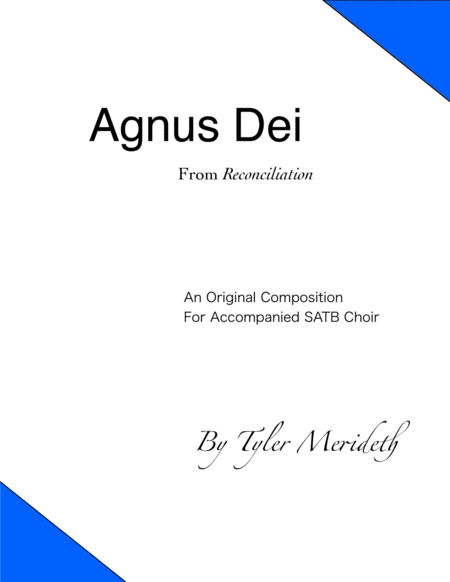Choral Choir (SATB) - Level 3 - Digital Download SKU: A0.782530 Composed by Tyler Merideth. Christian,Contemporary,Easter,Sacred,Spiritual. Octavo. 7 pages. Tyler Merideth #4810437. Published by Tyler Merideth (A0.782530). Agnus Dei is the tenth movement from a larger work entitled Reconciliation, a set of 12 Latin prayers. Each movement takes it's inspiration from individual postcards containing pictures of St. Michael's Cathedral in Coventry, England. When performed in sequence, Reconciliation can serve as a worship service however, the individual movements also can stand alone. Although the tenth movement in Reconciliation, Agnus Dei was the initial small seed catalyst that grew into the idea to write a 12 movement work. The idea came to me when I first visited Coventry Cathedral and saw a statue entitled Reconciliation by Josefina de Vasconcellos. The statue depicts two figures kneeling in an embrace. What makes this statue so powerful is that the placement of the statue is among the ruins of the original Cathedral after the bombing by German Aircraft in WWII. I immediately sketched an idea for this movement on the bus after my college choir rehearsed in the cathedral. When I returned to the United States, I wrote a rough vocal line and string orchestra accompaniment. The composition then lay dormant for more than a decade with no major changes. It was only this past week (almost fifteen years later) that I rewrote the accompaniment for piano and cleaned up the choral part. The opening unison vocal line can be timeshared among the voice parts. Since it covers a wide range, let the lower voices sing what range they sing well and the higher voices reciprocate. Please feel free to vary the tempo with rubato throughout the piece to allow for proper breath support. Do not be shy leaning into the dissonances found in the suspensions as the ultimate resolution in the grant us peace
